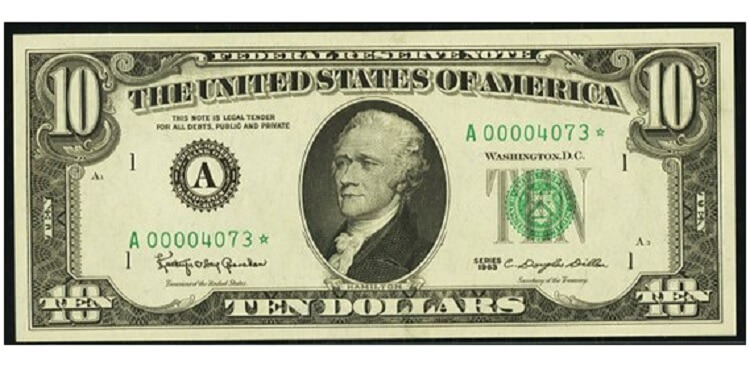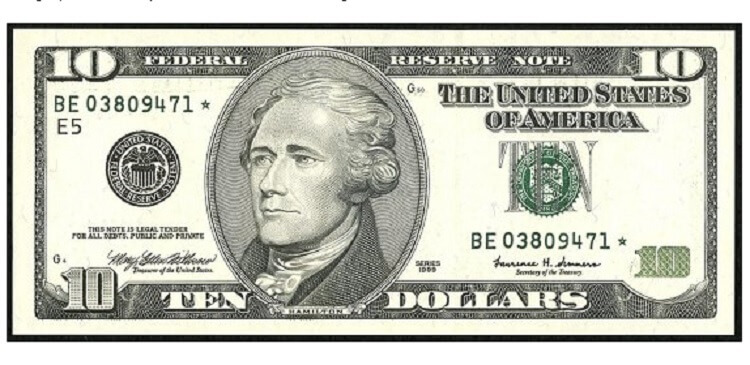1950 10 Dollar Bill – Do you have a 1950 10-dollar bill lying around in your wallet or stashed away in a forgotten drawer? While it may seem like just another piece of currency, this particular bill may hold a surprising amount of worth.
As with any old or rare item, the value of a 1950 10-dollar bill can vary greatly depending on its condition and unique characteristics.
In this blog post, we’ll dive into the world of currency collecting and explore the potential value of a 1950 10-dollar bill.
Who knows, you may just be sitting on a hidden treasure without even realizing it!
The 1950 10-dollar bill holds a rich history and great significance. As a valuable piece of currency, it is worth exploring the story behind its creation and circulation.
The 1950 $10 dollar bill, also known as the 1950 ten dollar bill, is a fascinating artifact that captures the essence of its time. From the economic climate to the political landscape, this bill is a testament to a bygone era.
Understanding its historical context enhances the appreciation for its value and design.

1950 Ten Dollar Bill: Specifications
The 1950 ten-dollar bill holds a special place in currency collecting due to its unique specifications.
With a denomination of $10.00 USD, this Federal Reserve Note features a green seal and comes in six different series: 1950, 1950A, 1950B, 1950C, 1950D, and 1950E.
Each series has its own characteristics and potential value, making it an intriguing item for collectors.
Are you interested in the history, rarity, or potential misprints of the 1950 $10 bill, we will provide you with all the specifications you need to know.
From off-center prints to counterfeit detection, dive into the world of the 1950 ten-dollar bill and discover its unique features.
How Much is a 1950 Series a $10 Bill Worth?
Well, the value of a 1950 $10 bill can vary depending on the series and the condition of the bill.
Bills issued from the Federal Reserve Bank of Minneapolis may sell for even higher prices.

- In extremely fine condition, most 1950 series $10 bills are worth around $20, while in uncirculated condition with an MS 63 grade, the price can go up to $67.50.
- As for the 1950A series, you can expect similar values, ranging from $20 in extremely fine condition to $70-80 in uncirculated condition with an MS 63 grade.
- The 1950B and 1950C series have slightly lower values, with prices ranging from $17.50 in extremely fine condition to $45-47.50 in uncirculated condition with an MS 63 grade.
- The 1950D series has a lower value of around $15 in extremely fine condition, but it can reach $40-50 in uncirculated condition with an MS 63 grade.
- The 1950E series is worth around $52.50 in extremely fine condition, and in uncirculated condition with an MS 63 grade, the price can go up to $100.
So, depending on the series and condition of your 1950 $10 bill, you could be holding onto a valuable piece of currency history. Don’t forget, though, that star notes, which are replacement bills, can sell for even higher prices.
1950 10 Dollar Bill Star Notes
Star notes are like the hidden gems of currency collecting. These replacement bills, printed by the United States Federal Reserve, are rare and therefore more valuable than standard notes.
To determine if you have a star note, simply look for a star symbol at the end of the serial number.
- For the 1950 series of $10 star notes, you can expect them to be worth around $50-70 in extremely fine condition.
- In uncirculated condition with an MS 63 grade, the price can go up to $450. Star notes issued from specific Federal Reserve Banks, such as Atlanta, Minneapolis, and Richmond, can sell for even more money.
Remember, if you have a star note, it’s important to place it inside a currency holder to protect its value. And who knows your 1950 $10 bill may even have a misprint, making it even more valuable to collectors.
1950 10 Dollar Bill Grading System
Grading the condition of a 1950 $10 bill, there are two main categories to consider: extremely fine and MS 63 choice uncirculated.
An extremely fine note will show small signs of being in circulation, but it will still have its original brightness and crispness.
There may be a few minor creases or folds, but no stains, discolorations, or tears.
On the other hand, an MS 63 choice uncirculated note will show no signs of ever being in circulation. It will retain its original crispness and will be well-centered.
Don’t underestimate the worth of your 10-dollar bill from 1950 – it may just surprise you!
How To Identify A Star Note?
Curious about whether your 1950 $10 bill is a star note, the process of identifying it is straightforward. Star notes were created to replace damaged bills during production, but they still entered circulation.
Many bills from this era have star series, and sometimes the machines at the Federal Reserve would malfunction, leading to the need for replacement bills.
To determine if your bill is a star note, examine the serial number on the bottom left side of the bill. If you see a small star symbol right before the serial number, congratulations! You have a star note.
Despite its small size, the star symbol holds significant value, especially if combined with other factors like a misprint. So take a close look at your 1950 $10 bill, and you might just discover a hidden gem.
Where and How to Sell Your Vintage 1950 Ten-Dollar Bill
Ready to cash in on your vintage 1950 $10 bill? Selling it can be a thrilling experience, but it’s important to approach it with caution and knowledge.
There are various avenues you can explore to sell your bill, including online marketplaces, currency dealers, and auctions.
When listing your bill for sale, be sure to highlight any unique features, such as misprints, that could increase its value.
Are 1950 $10 bills worth anything?
Wondering about the value of a 1950 10-dollar bill, let me clarify it for you. In terms of monetary worth, any ten-dollar bill from 1950 or later is only worth its face value of $10 dollars.
So, while the 1950 10-dollar bill holds historical and collector’s value, it won’t fetch you more than $20.
Nonetheless, this doesn’t diminish its significance as a piece of currency and a glimpse into the past.
What is the value of a $10 1950 today?
The value of a 1950 10-dollar bill has significantly increased over the years. While its face value remains at $10, the purchasing power of this bill today is around $125.88. This represents a substantial increase of $115.88 over the span of 73 years.
The 1950 $10 dollar bill holds not only historical and collector’s value but also monetary value that has appreciated over time.
What does a 1950 $10 bill look like?
Take a peek at this 1950 10-dollar bill and you’ll see a design that’s reminiscent of the bills issued until 2000. It’s an elegant and classic piece of currency that holds its own unique charm.
Although its appearance is similar to other $10 bills, its historical significance and value set it apart from the rest.
How to tell if a 1950 $10 bill is real?
To determine the authenticity of a 1950 10-dollar bill, take a close look under a light source.
One of the key features to check is the presence of a security thread. Thread, which appears as a thin, embedded line, is an important security measure that counterfeiters often struggle to replicate.
By examining the bill carefully and ensuring it has this security feature, you can confidently identify a genuine 1950 10-dollar bill and distinguish it from any counterfeit copies.
Conclusion
1950 $10 bill, don’t underestimate its potential value. Depending on the series and condition, it could be worth more than you think. So, before you dismiss that old bill as just another piece of currency, take a closer look. You might just have a hidden treasure in your hands.
The 1950 10-dollar bill holds both historical significance and collector’s value. While its monetary worth remains at $10, its value in terms of purchasing power has increased significantly over the years.
The beautiful design of this bill, coupled with its unique features, makes it a highly sought-after item. So, if you come across a 1950 10-dollar bill, remember that its value goes beyond its face value and represents a glimpse into the past.
See Also About Other $10 Bills: